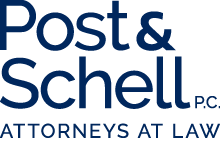

Pennsylvania Court of Common Pleas Confirms No Double Recovery for Claimant Seeking UIM Coverage Under the Same Policy
Pennsylvania Court of Common Pleas Confirms No Double Recovery for Claimant Seeking UIM Coverage Under the Same Policy in Which She Received a Payout for a Bodily Injury Claim Arising from a Multi-Vehicle Accident Caused by a Single Tortfeasor
On May 30, 2025, the Court of Common Pleas in Berks County, Pennsylvania answered the question of whether the Underinsured Motorist Benefits (“UIM”) and Limits of Liability provisions in an automobile policy preclude a claimant from recovering under both bodily injury coverage provisions and UIM coverage provisions.
In Maria Cabrera v. American States Insurance Company, Berks C.C.P. No. 24-4178, the Plaintiff argued that she should be entitled to UIM benefits because the accident involved two separate motor vehicles that happened to be on the same policy of insurance. The Court disagreed.
Background
The claim at issue arose from a June 23, 2022, motor vehicle accident involving two vehicles insured by the same individual under the same auto policy. The Plaintiff, Maria Cabrera, sustained injuries while a passenger in a Honda Civic that was struck by a Toyota RAV4, both of which were insured under the same policy of insurance purchased by the driver of the RAV4.
Following the accident, American States Insurance Company, on behalf of its insured, reached a settlement with Ms. Cabrera by agreeing to pay the policy limits of the bodily injury liability coverage portion of the policy. Ms. Cabrera then proceeded to make an additional claim for UIM Coverage in connection with the accident under the same policy insurer the driver of the RAV4, which American States denied.
In subsequent coverage litigation, Ms. Cabrera disputed the insurer’s denial, stating that her claims were against two separate motor vehicles and the fact that those motor vehicles were insured pursuant to the same policy was irrelevant. She further argued that the policy was silent as to single versus multi-vehicle policies and the effect of UIM Coverage or limits or liability thereupon.
The automobile policy at issue defined an “underinsured motor vehicle” to mean “a land motor vehicle . . . to which any type of bodily injury liability bond or policy applies at the time of the accident, but the amount paid for bodily injury . . . is not enough to pay the full amount the insured is legally entitled to recover as damages” but the policy specifically excluded from the definition “any vehicle or equipment . . . for which liability coverage is provided under Part A of this policy.”
The policy’s UIM Coverage section also stated that “[n]o one will be entitled to receive duplicate payments for the same elements of loss under this coverage and Part A, Part B or Part C of this policy.”
The Decision
The Court granted American States’ motion for summary judgment. In doing so, the Court cited the Pennsylvania Superior Court’s decision in Wolgemuth v. Harleysville Mut. Ins. Co., 535 A.2d 1145, 1149 (Pa. Super. 1988), wherein the Superior Court observed:
An underinsured motor vehicle, must, by definition, be an insured vehicle. Thus, the statute contemplates one policy applicable to the vehicle which is at fault in causing the injury to the claimant and which is the source of liability coverage (which is ultimately insufficient to fully compensate the victim), and a second policy, under which the injured claimant is either an insured or a covered person. It is the second policy which the statute contemplates as the source of underinsured motorist coverage, where the liability coverage provided by the first policy of insurance is insufficient to fully compensate the claimant for his injuries.
Further, the Court discussed the Pennsylvania Superior Court’s decision in Caldararo v. Keystone Ins. Co., 573 A.2d 1108, 1111 (Pa. Super. 1990), where a plaintiff was injured in a motor vehicle accident in which he was a passenger in a vehicle operated by his wife. There, after instituting a claim against his wife, the plaintiff received a payment for $100,000, which was the full limit of liability coverage under the policy at issue. The plaintiff then instituted a claim for underinsured motorist coverage, which was subsequently denied. On appeal, the Superior Court stated that “permitting the plaintiff the underinsurance recovery he seeks in this action would require that [the Court] ignore the purpose of the coverage” as well as “the provision of the insurance agreement which excludes the plaintiff’s automobile from the category of vehicles which may be considered to be ‘underinsured’ for the purposes of such coverage.”
After discussing applicable Pennsylvania law, the Berks County Court ruled:
This Court is unconvinced that lack of a distinction between accidents involving two vehicles insured under the same policy versus accidents between two separately insured vehicles creates an ambiguity. To the contrary, the policy is abundantly clear and consistent that where recovery is accomplished under the bodily injury provisions, no recovery can be made under the underinsured provisions. We see no reason to depart from the clear and unambiguous terms of the policy.
Takeaways for Insurers
Maria Cabrera v. American States Insurance Company confirms what many insurers already knew but may still, at times, face uncertainty with when it comes to claims in the auto insurance context: That there can be no claim for UIM benefits under a policy that already paid out its bodily injury liability limits in a single tortfeasor accident. Said differently, UIM claims in Pennsylvania require there to be two auto insurance policies – the policy issued to the at fault driver and a separate policy under which the claimant is either an insured or a covered person. A double recovery of liability and UIM coverage is not allowed, regardless o the number of vehicles involved in the accident.
Disclaimer: This post does not offer specific legal advice, nor does it create an attorney-client relationship. You should not reach any legal conclusions based on the information contained in this post without first seeking the advice of counsel.


